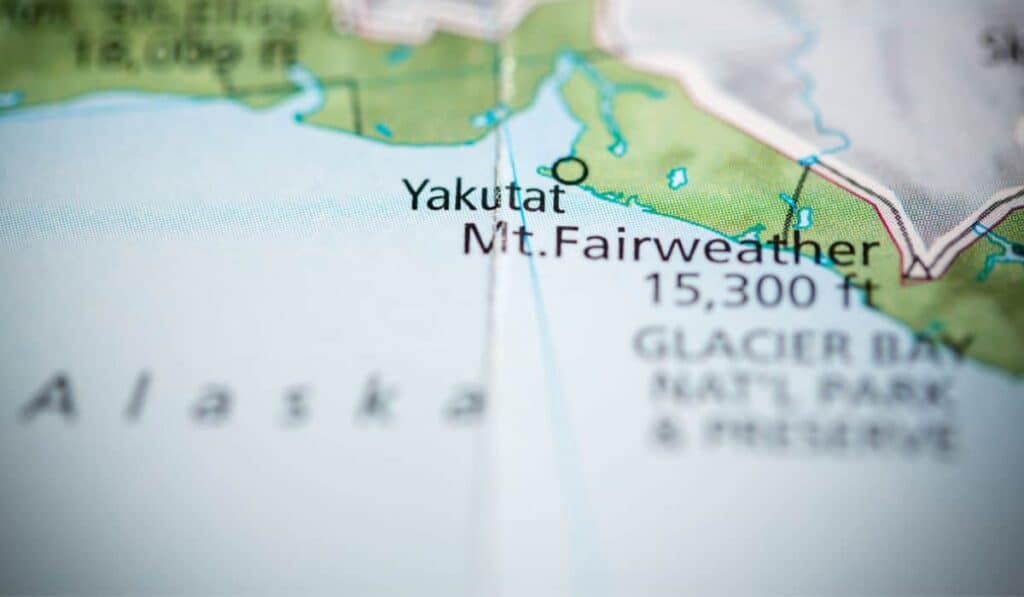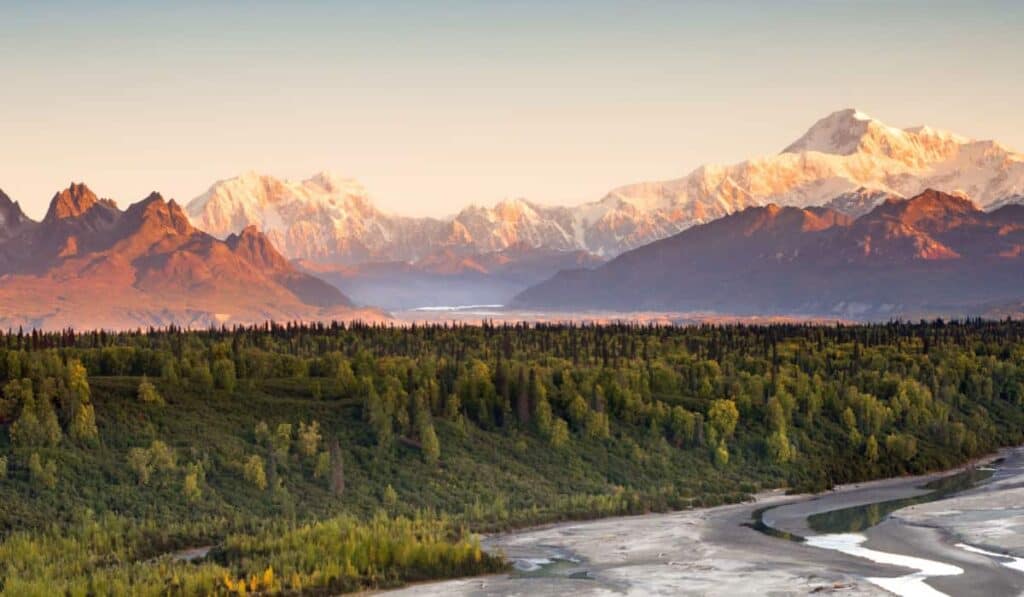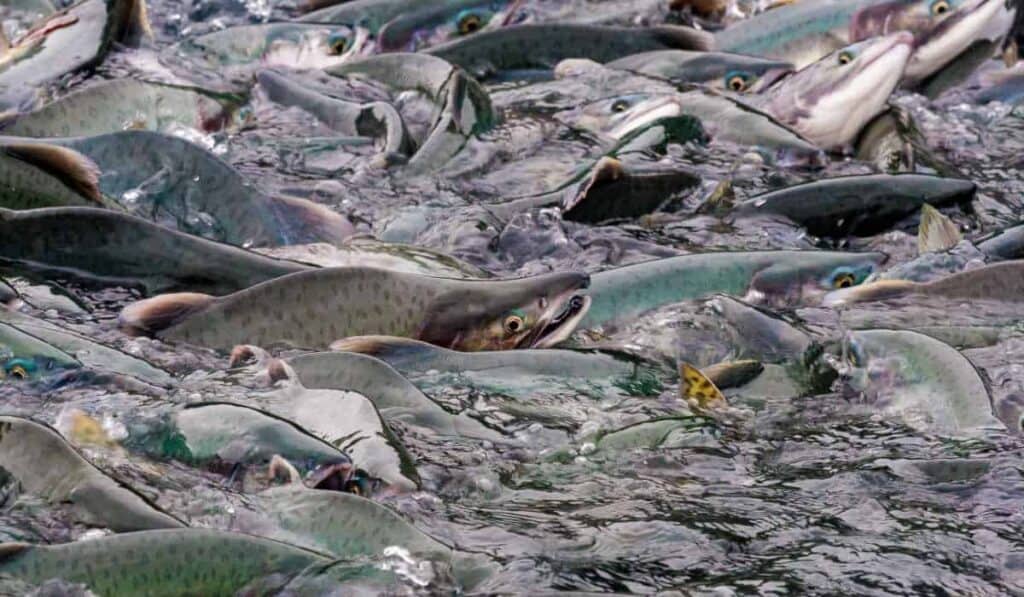| Location | Southeast Alaska, United States |
| Coordinates | 56°52′21″N 134°07′25″W |
| Mountain Range | Stikine Icecap, Coast Mountains |
| Elevation | 2,767 meters (9,077 feet) |
| Prominence | 2,159 meters (7,083 feet) |
| First Ascent | August 25, 1946 by Fred Beckey, Clifford Schmidtke, and Bob Craig |
| Climbing Routes | North Face, East Ridge, West Ridge |
| Difficulty | Technical rock and ice climbing, routes rated up to 5.10 |
| Nearest Towns | Petersburg, Wrangell, Juneau |
| Access | Helicopter, boat, or a combination of both |
| Climbing Season | May to September, with June and July being the most popular |
| Weather | Unpredictable, can range from clear skies to severe storms |
| Required Permits | None, but climbers should follow Leave No Trace principles and regulations |
When you hear the name “Alaska,” what comes to your mind first? What is the first word you think of when you hear the state’s name?
Snow, cold, beautiful, Northern Lights (it’s two words, but I’ll allow it), glaciers, polar bears? Something else?
Whichever word it is, I’m going to guess that it isn’t “mountains”. Other than Denali, most people (at least the ones that I’ve talked to) seem to think of Alaska as a barren wasteland of snow and ice and totally forget about the mountains.
It may surprise you to learn that there are over 3,000 named mountains in the State of Alaska. Denali, formerly known as Mount McKinley, is the most famous, of course, since it is the tallest mountain in North America.
Over 35,000 people have attempted to climb Denali, with roughly 60% of those reaching the summit (the National Parks Service posts yearly numbers).

Those numbers are a lot higher than the mountain I’m going to talk about today, which is located a few hundred miles southeast, near the town of Petersburg.
In the Stikine Icefield, on the border between Southeast Alaska and British Columbia lies a mountain called The Devils Thumb, one of the most notorious and treacherous peaks in North America.
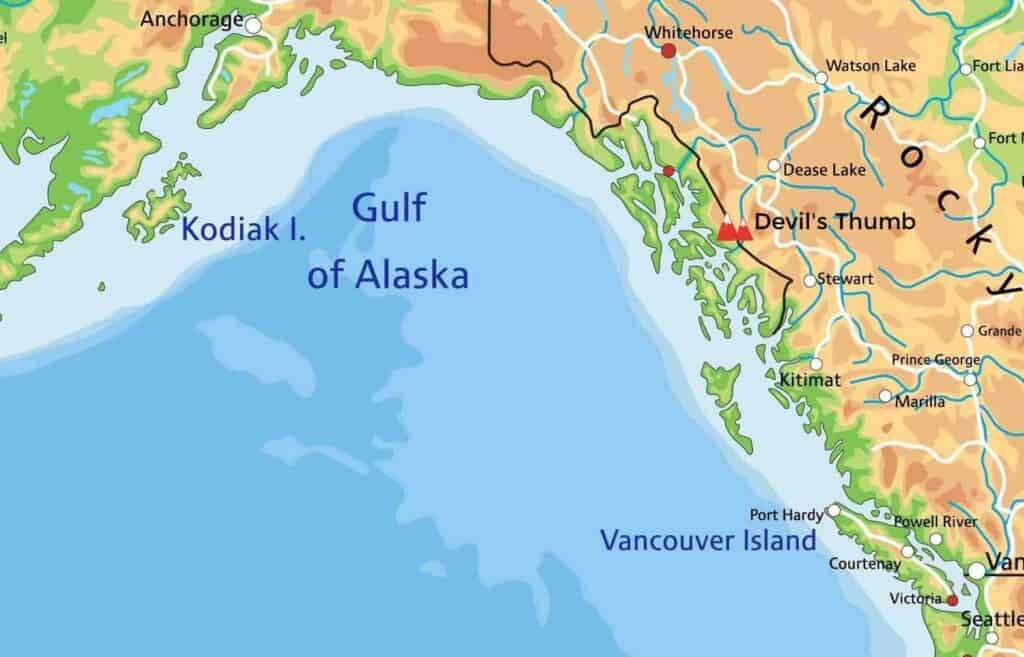
When I say “on the border,” I actually mean that it is one of the mountains that make up the border between Alaska and Canada. Some maps actually list it as “Boundary Peak 71.”
This is one of six mountains or other geographical features around the world that I’ve found which has the name “Devils Thumb”.
I can’t imagine seeing a rock face and saying, “That isn’t just any thumb, that’s clearly the thumb of the devil himself!” That could be why they don’t let me name things. Maybe they should, I don’t know.
Devils Thumb – Local History
In the language of the Tlingit people, the mountain is called Taalkhunaxhkʼu Shaa, which means “the mountain that never flooded.”
As the legend is told, Kit-ká-ositiyi-qa, the first man on Earth, had many children with his sister, who was the only woman on Earth at that time.
After seeing how wicked they had all become, he ended up killing his own children to prevent them from multiplying.
He then summoned the Aangalakhu, a great flood, to destroy the rest of mankind as well. However, some of the people survived by fleeing into the mountains and waiting out the floods in their boats on the peaks.
However, the flood waters never reached the peak of one mountain near Séet Ká (the Tlingit name for Petersburg). That is how the mountain earned its traditional name.
As a brief aside, if you’ve ever heard any Tlingit stories (which you will, if you come to Southeast Alaska), you’ll no doubt have heard about Raven, the trickster who brought light and water into the world, among many other deeds.
Raven’s mother is the sister in the above story and he was born shortly after the flood waters subsided.
Its English name came much later, during a geological expedition in 1869 by US Naval Commander R. W. Meade.
He chose the name as he saw a 1600-foot projection on the mountain that resembled a thumb.
Interesting Tidbit: For reasons that I don’t fully understand, there is no apostrophe in Devils Thumb (much to the anger of the grammar-checking software I have installed on my computer). People I’ve talked to up here usually put one in but officially speaking, there isn’t one.
Why Is Devil’s Thumb (In)Famous?
The Devils Thumb has often been called the most dangerous and difficult mountain to climb in all of North America.
The eastern ridge has been successfully climbed a few times, the first being in 1946 by Fred Beckey and his two friends, Clifford Schmidtke and Bob Craig.
I’d never heard of Fred Beckey before, but after a quick glance at his Wikipedia page, it was very clear to me that he was very likely one of the all-time best mountain climbers.
I was able to deduce this information from the fact that he died in Seattle a few years back at 94 years old. A lot of famous mountain climbers never reach that age, especially those that have spent any time considering Devils Thumb.
I also learned that Mount Beckey, a peak of over 9,000 feet in the Cathedral Mountains near Denali, was named for him after he was the first person to climb it.
He was part of the first ascent of not just The Devils Thumb, but of nearly 1,000 mountains in North America. Beckey was still climbing mountains in the mid-2010s when he was over 90 years old!
It has also been climbed a few other times, all from the eastern side. Novelist Jon Krakauer, the guy who wrote the book “Into the Wild” that Alaskans hate famously climbed the eastern side and wrote a book about it.
The Northwest Face Of Devils Thumb
Notice how I said multiple times that it was only the eastern side that was successfully climbed.
The Northwest Face has seen many expeditions in the past hundred years or so and not a single one has been successful. At least three teams have died in the attempt.
It is the single largest rock face in North America and sits at an angle of 67 degrees, making it incredibly steep.
Do you remember that giant wall in The North that was made of ice that was heavily featured in the lousy seasons of HBO’s Game of Thrones? It’s pretty much like that, except it’s made out of rock and occasionally frozen over with ice.
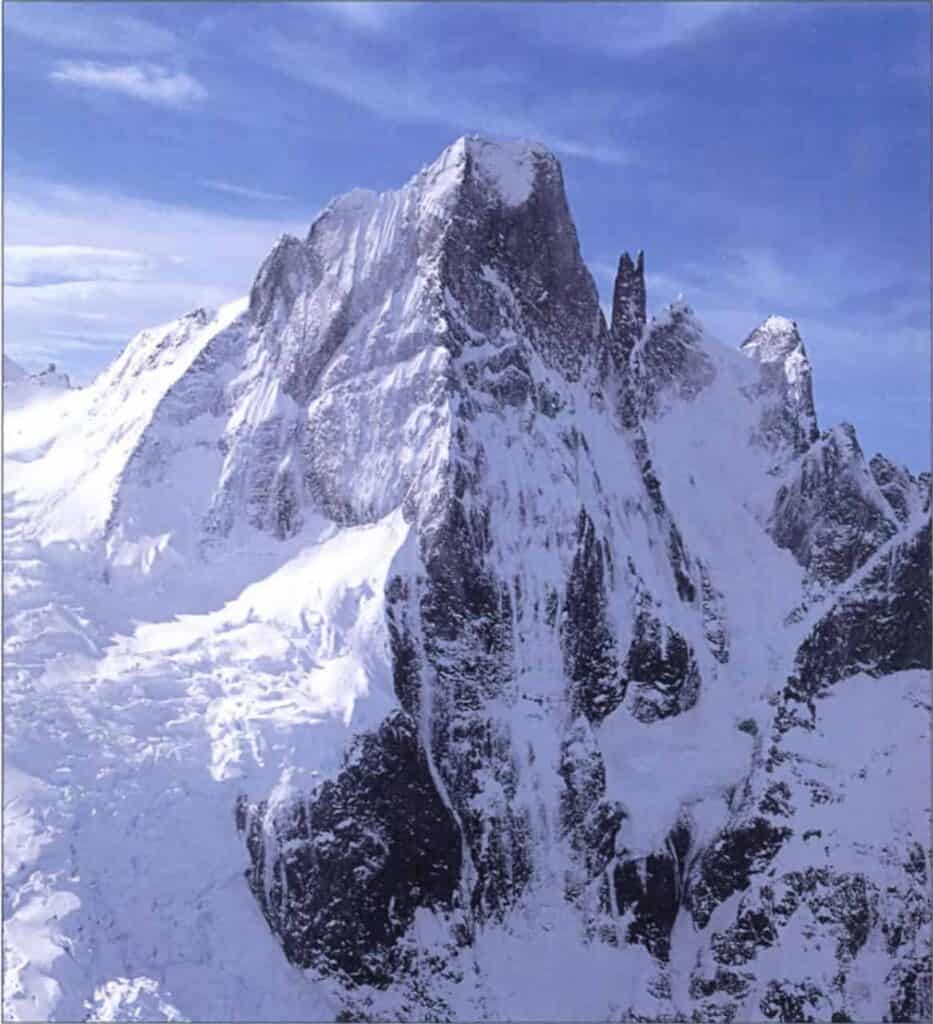
A local climber named Dieter Klose currently holds the record for the highest ascent. He made it about halfway up the mountain before being forced to turn back.
He wrote up a detailed account of his attempt in a 2003 issue of The American Alpine Journal, of which excerpts can be found online or the entire issue of the journal can be purchased for $35.
The Northwest Face is 6,277 feet high, which actually makes it shorter than the 9,077 feet of the Eastern side.
Why is the Northwest Face so Difficult to Climb?
There are a lot of factors that make the Northwest Face nearly impossible to climb. I say “nearly” because I’m hedging my bets that someone might actually successfully do it one day, even though I don’t expect that to be the case.
In addition to the steep angle and large sections of rock, it is also frequently covered in ice.
There are also frequent storms on the mountain, which receives an average of over ten feet (120 inches) of rain every year.
According to those who have attempted a summit in the past, the Northwest Face can only be climbed between midnight and about 2 PM, because of the almost-daily avalanches.
In addition to the weather-related issues, there is also the problem of falling rocks, which have claimed the life of at least one known climber.
Will Anyone Ever Climb The Northwest Face?
In theory, of course, Devils Thumb is climbable. However, it will require the confluence of nearly perfect conditions. Many teams wait weeks at the base and never make an attempt or turn back almost instantly as the weather is not in agreement with the attempt.
I’m sure that, one day, someone will have the luck of being at the base when the planets align, and their attempt with be possible. How many climbers will die before then, I can’t say.
While I’m not a professional climber and haven’t ever been to the base of Devils Thumb, something I do know a lot about is the weather in Southeast Alaska. Every city, town, and unincorporated municipality I’ve ever been to has had unpredictable weather for as long as I can remember.
In the winter, I’ve seen it snow for nearly three straight days. Then, later in the week, it’ll snow for five minutes and then stop. The rest of the year, it’s the same thing but with rain.
Devils Thumb gets even more rain than we do here, by a lot. Juneau gets between 60 and 70 inches of rain (depending on the part of town) in an average year and Devils Thumb gets around 120.
Wet avalanches can occur when high temperatures, rain, or something else causes a snowpack to break apart, which creates a (literal) snowball effect and can send hundreds of pounds of snow tumbling down the mountain.
The northwest face of Devils Thumb has been called “North America’s Last and Greatest Unsolved Problem,” because no one has successfully figured out how to safely reach the summit.
The last count I heard was that a total of 13 expeditions have been undertaken since 1977. Of those, six or seven of them turned back almost immediately, not even reaching the giant slope partway up the mountain.
The reason that number is so low is that it simply cannot and will not be done in our lifetimes.
Should I Try to Become the First Person to Summit Devils Thumb?
No, you should not. Thank you for asking, but no.
With so many climbable mountains in Alaska, spending years waiting at the base of a killer mountain in the hopes that the weather favors you in a way that hasn’t happened in 50+ years is…a devil’s errand.
Closing Thoughts
Devils Thumb is one of the most beautiful and intimidating mountains in the world. Even the faces that are possible to climb are exceedingly difficult for even the most advanced of climbers.
If you have a lot of experience climbing and you want to take on one of the “easier” faces, I’d recommend checking out Jon Krakauer’s book on the subject, “Eiger Dreams: Ventures Among Men and Mountains.”
He also talks about it in chapters 14 and 15 of Into The Wild, which is a good read as long as you don’t come away from it idolizing Christopher McCandless.
If you’re an expert mountain climber who has ascended similar or more difficult peaks, go ahead. If you aren’t or if you doubt your abilities, please consider an easier mountain.
I don’t recommend Denali either, but that’s primarily because the permit application is $395 per person and you’re required to register at least 60 days in advance.
I understand why they do it, but personally, I’d rather climb a shorter mountain that doesn’t require a permit. I get that Denali has special significance, but we have about 3,000 other mountains that don’t require permits.
Since the base of the mountain is accessible by helicopter, boat, or on foot, it’s relatively easy to get close enough to take some pictures of Devils Thumb. For 99% of people, I’d say that’s good enough.



